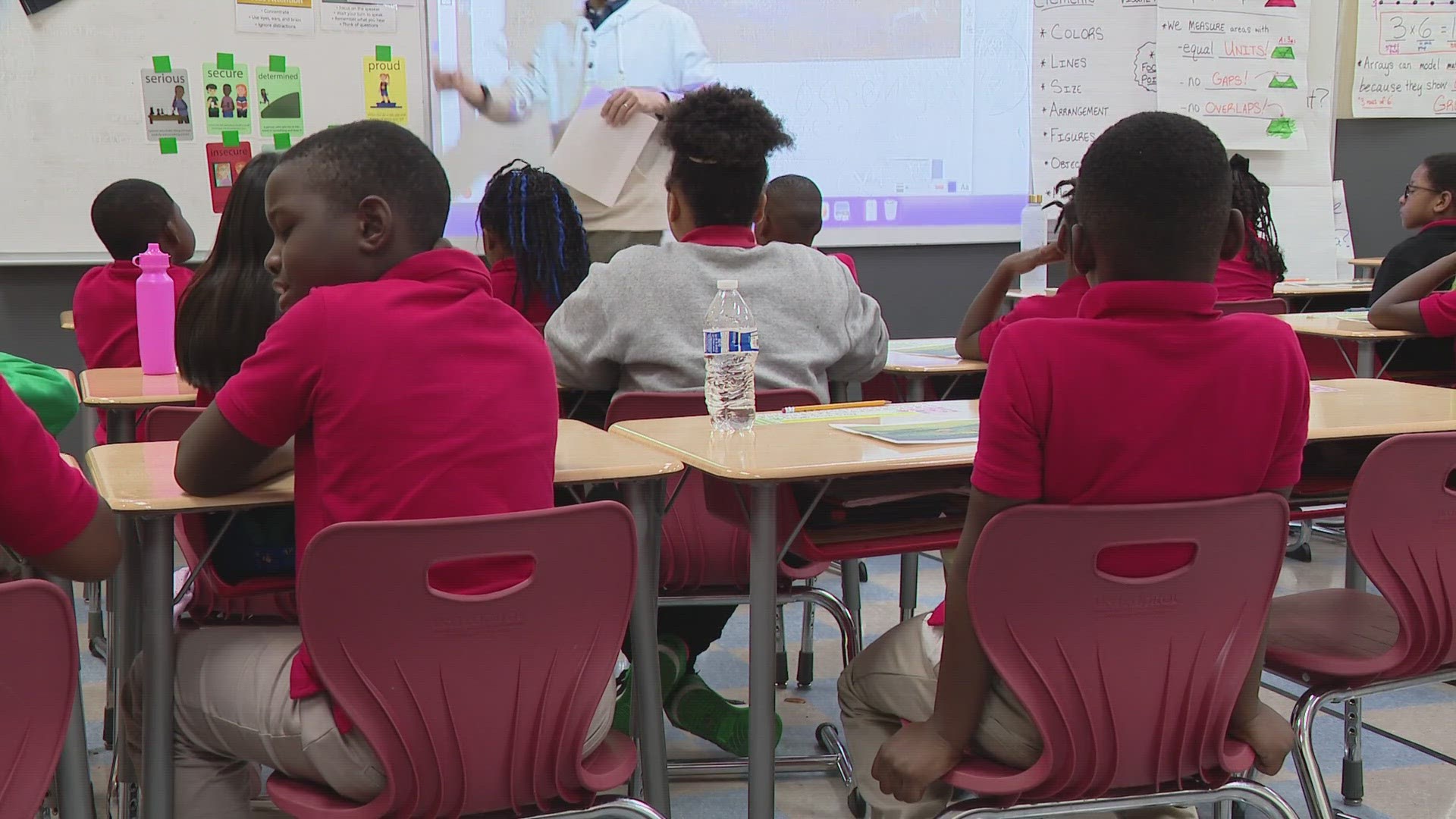INDIANAPOLIS — Students at Circle City Prep, a K-7 charter school on the far east side of Indianapolis, are taking learning to new heights.
"We've actually been adopting some new curricula, as a lot of people are," said Sami Hyde, assistant school leader of academics at Circle City Prep.
Some of that curricula surrounds reading.
Schools have implemented what's called the "science of reading" to help students progress.
"The problem with the buzz words — 'the science of reading' — is that the science of reading is actually a huge body of research, and it is about reading and how kids read," Hyde said. "It is not about the science of teaching reading. So, there's not a beautiful handbook we can check off and say, 'Yes, you're doing these.' It's more about, now that we know more about how kids learn, what changes do we need to make to our old pedagogy to be up to date with the modern research."
Hyde said third grade students who took the I-READ3 test have excelled.
From the 2021-2022 school year, students showed a 20% increase in proficiency.
"I specifically say proficiency, because a lot of people are like, '20% growth is great,' but 20% more of the students in our school were meeting or exceeding their IREAD-3 standards last year," Hyde said.
Teachers also have challenges.
"It's one data point. It doesn't tell the whole story, and so while we're super excited to say that we are outperforming neighborhood schools, we are outperforming schools on this side of Indianapolis, we actually want to go even further than that," Hyde said.
According to Hyde, the state has allowed the school to begin administering the IREAD tests to second graders. Hyde said student success can be attributed to several things, including hard-working teachers and families.
"We have to see where our kids are at, and we have to respond based on what they need. It's not one size fits all. How are we going to get this child where they need to be if the curriculum itself isn't enough? What comes next?" Hyde said.
Hyde said students are learning things like phonics, how to decode and encode letters, and more handwriting, for starters.
"The students that we serve may have labels. They may be low-income. They may be in a particular demographic that's been under-resourced in the past. We have over 20% of our students are multi-language learners, and it's still possible," Hyde said.
It's possible to overcome potential barriers.
"If we can get a 20% increase in one academic year, then I know that using science of reading research, other schools can do that as well because our kids deserve it," Hyde said.

